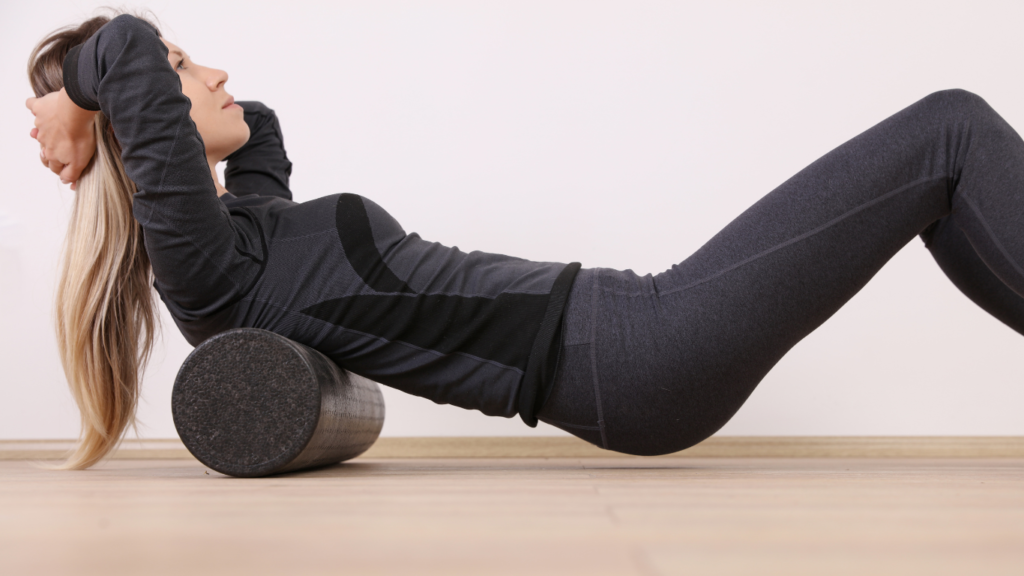It’s often asked whether a foam roller is worth it. In my opinion a foam roller is a wonderful tool to have available as they can be utilised for many different injuries all over the body. There are several types of foam rollers available with long foam rollers and short foam roller providing their own benefits. The versatile tool allows you to perform self-myofascial release, targeting tight muscles and releasing tension.
Can a foam roller help with lower back pain?
Can a foam roller help with sciatica?
Yes, it certainly can.
We’ve unveiled a collection of the 5 best foam rolling exercises tailored specifically to alleviate low back pain.
So grab your roller and get ready to roll your way to comfort, flexibility and renewed vitality!

- Lumbar roll-out:
Lie on your back, knees bent, and place the foam roller beneath your lower back. You can support your upper body by leaning on a forearm or elbows. . You might find it more comfortable to lean every so slightly to one side so the roller rests to one side of your spine. Gently roll up and down, using your feet to control the motion. This exercise provides a gentle massage to the muscles surrounding your spine, helping release muscle tightness.
2. Gluteals and piriformis release:
The gluteal muscles are a powerful set of muscles which can also contribute to low back pain. Sit on the foam roller and cross one ankle over the opposite knee. Lean to the side of the crossed leg, targeting the muscles at the back of the hip. Roll back and forth, trying different angles to reach various areas of tightness. This exercises offers relief to the piriformis muscle, which can contribute to sciatic-like pain. This exercises can also be excellent for if you are experiencing other forms of hip region tightness.
3. Thoracic extension roll:
Your thoracic spine, or mid back, plays a crucial role in your overall back health and this exercise targets that vital area. Lie down with the foam roller positioned horizontally beneath your upper back. Gentle roll from the height of your shoulder blades down to the middle of your back. Try to extend your upper back over the roller as you roll down. By enhancing thoracic mobility, your indirectly contribute to low back pain prevention.
4. Quadratus lumborum release:
The quadratus lumborum is a deep muscle on either side of your low back and can often play a role in low back pain. Lie on your side, placing the foam roller beneath your waist. Gently roll along the side of your body, from the bottom of your ribcage to your hip bone. This move helps release tightness in the quadratus lumborum and contributes to a more relaxed lower back.
5. Hamstring release:
Tight hamstrings can contribute to low back pain, making this exercise a must try. Sit on the foam roller with your legs extended and the roller positioned under your hamstring. You can do both legs at the same time or cross one leg over the other to increase the pressure you can apply. Roll up and down the entire length of your hamstrings.
By incorporating these targeted exercises into your weekly routine you’ll be on your way to improving your low back pain. Just a few minutes of foam rolling each day can provide remarkable results over time.